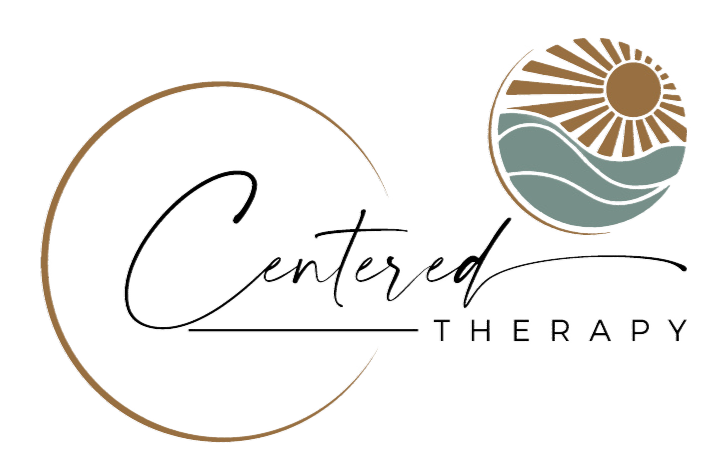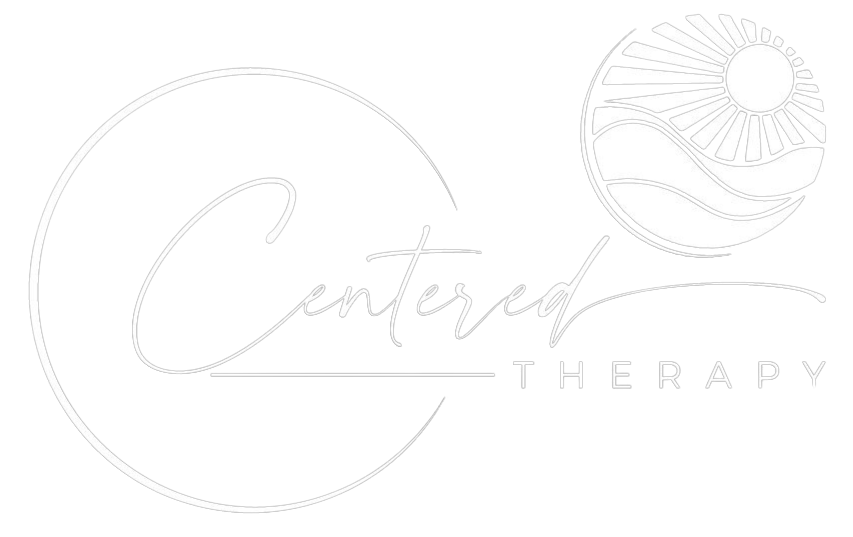Anxiety Disorder Diagnosis
Anxiety is typically diagnosed through a comprehensive assessment by a healthcare professional, such as a psychologist, psychiatrist, or primary care physician. It requires several types of tests: physical and mental health assessments including psychological testing and evaluation.
The healthcare professional will begin by conducting an initial evaluation to gather information about your symptoms, medical history, and personal background through the clinical interview. They may ask about the nature and duration of your symptoms, triggers or situations that provoke anxiety, and how your symptoms affect your daily life. Various assessment tools, questionnaires, or rating scales may be used to assess the severity of your anxiety symptoms and measure their impact on your functioning. The doctor may conduct a medical evaluation to rule out any underlying medical conditions that could be contributing to your symptoms. Certain conditions, such as thyroid disorders or cardiovascular problems, can mimic or worsen anxiety symptoms.
Typically, blood tests are used to rule out any other explanation for the symptoms, such as hypothyroidism. Based on the assessment findings, the healthcare professionals will discuss their diagnostic impressions with you. From there, they can develop an appropriate treatment plan tailored to your specific needs.
Diagnostic Criteria
Generalized Anxiety Disorder (GAD):
- Excessive anxiety and worry about various events or activities, occurring more days than not for at least six months
- Difficulty controlling the worry
- The anxiety and worry are associated with three or more of the following symptoms: restlessness, feeling on edge, easily fatigued, difficulty concentrating, irritability, muscle tension, sleep disturbances
- The anxiety, worry, or physical symptoms cause significant distress or impairment in social, occupational, or other areas of functioning
Panic Disorder is a type of anxiety disorder characterized by recurrent and unexpected panic attacks. Diagnostic criteria include the following:
- Recurrent, unexpected panic attacks characterized by a sudden surge of intense fear or discomfort, reaching a peak within minutes
- At least one of the attacks is followed by one month (or more) of one or both of the following: persistent concern or worry about additional panic attacks or their consequences, significant maladaptive behavioral changes related to the attacks
- Exclusion of other medical conditions that may account for the panic attacks
Social Anxiety Disorder (SAD), also known as social phobia, is a mental health condition characterized by an intense fear or anxiety of social situations. Signs of SAD may be evident by the following behaviors:
- Marked fear or anxiety about one or more social situations in which the individual is exposed to possible scrutiny by others
- The individual fears they will act in a way or show anxiety symptoms that will be negatively evaluated
- Social situations provoke fear or anxiety and may be avoided or endured with intense distress
- The fear or anxiety is persistent, lasting for six months or more
- The fear, anxiety, or avoidance causes significant distress or impairment in social, occupational, or other areas of functioning
Postpartum Anxiety is excessive, all-consuming worrying experienced in the postpartum period. While symptoms vary, a few signs of Postpartum Anxiety are:
- Intense physical signs of anxiety, such as nausea, dizziness, hot flashes, rapid heart rate and shortness of breath
- Constant worry about everything, especially the baby
- Rapid thinking or racing thoughts
- Restlessness or inability to sit down
- Disturbances of eating and sleeping
- Constant worry that something bad is going to happen
- Feeling detached from the baby or having difficulty forming a strong emotional bond; feeling guilty or ashamed about these feelings
Just like Postpartum Depression, these symptoms can be debilitating, preventing women from leaving the house or connecting with sources of support.
Treatment Options
Psychotherapy
Counseling or psychotherapy can provide individuals with a safe and supportive space to discuss their concerns, process emotions, and learn coping strategies to manage anxiety. Find a therapist that treats anxiety near you.
Common Medications
The most commonly prescribed medications for GAD are antidepressants, including selective serotonin reuptake inhibitors (SSRI), and serotonin and norepinephrine reuptake inhibitors (SNRI), and anti-anxiety medication. Buspirone or benzodiazepines may be prescribed depending on your needs. Find a psychiatrist that can provide medication management for anxiety near you.
Herbal Treatments
Many herbal remedies are popular for treating anxiety, although scientific research is limited. It’s important to check with your doctor before taking any alternative medicines as they may interfere with your prescription medication.
- Chamomile – Short-term use of chamomile is considered a safe way to reduce some symptoms of anxiety.
- Lemon bile – Preliminary research shows lemon balm can reduce the nervousness and excitability that are often associated with anxiety.
- Lavender – Some evidence suggests lavender, either taken orally or through aromatherapy, can reduce anxiety.
Breathing Exercises
Breathing exercises are a highly effective way of calming feelings of anxiety, as it helps people self-regulate when facing stress. By sowing the heart rate and increasing the supply of oxygen to the brain, breathing exercises can slow racing thoughts and reduce anxiety. Here are some popular breathing techniques:
- Box breathing – This simple method requires a person to breathe in for the count of four, hold for four, and exhale for four seconds, restoring awareness to the breath.
- Alternate nostril breathing – People can feel calm by holding one nostril closed while breathing and alternating after every breath.
- Pursed lip breathing – Breathe in through your nose, hold the air, then exhale slowly through pursed lips as if you were about to whistle. This technique forces you to slow down while breathing.
Stress management
Learning effective stress management techniques, such as time management, setting realistic goals, and prioritizing self-care, can help reduce anxiety symptoms and improve overall well-being.
Lifestyle Modification
Making healthy lifestyle choices, including regular exercise, adequate sleep, a balanced diet, and limiting caffeine and alcohol intake, can positively impact anxiety symptoms.
At Centered therapy counseling Health, we offer a range of mental health services to help you manage your anxiety, including medication management and psychotherapy.
What Types of Therapy Are Effective for Treating Anxiety Disorder?
Certain types of therapy have been found to be effective in treating Anxiety Disorders.
- Cognitive Behavioral Therapy (CBT) is a widely used and evidence-based therapy for anxiety disorders. It focuses on identifying and modifying negative thought patterns and behaviors that contribute to anxiety. CBT helps individuals develop coping strategies, challenge irrational thoughts, and gradually confront feared situations through exposure therapy.
- Acceptance and Commitment Therapy (ACT) aims to help individuals accept their anxious thoughts and feelings rather than trying to control or eliminate them. It emphasizes mindfulness and encourages individuals to identify their core values and take actions aligned with those values, even in the presence of anxiety.
- Dialectical Behavior Therapy (DBT) was originally developed to treat Borderline Personality Disorder but has also shown effectiveness in addressing anxiety disorders. It combines cognitive-behavioral techniques with mindfulness and distress tolerance skills to help individuals regulate their emotions and cope with anxiety.
- Therapies such as Mindfulness-Based Stress Reduction (MBSR) and Mindfulness-Based Cognitive Therapy (MBCT) incorporate mindfulness practices to increase awareness of the present moment and reduce reactivity to anxious thoughts and sensations.
- Exposure Therapy involves gradually and systematically exposing individuals to feared situations or objects, allowing them to confront their fears in a controlled and supportive environment. This helps to reduce anxiety and desensitize the individual to the feared stimuli.
- Psychodynamic Therapy explores the underlying psychological and emotional factors contributing to anxiety. It aims to uncover unconscious conflicts and patterns of behavior that may contribute to anxiety symptoms.
- Group Therapy provides a supportive environment where individuals with anxiety can share experiences, learn from one another, and practice new skills under the guidance of a therapist. Support groups offer peer support and a sense of belonging.
Medication Treatment Options for Anxiety Disorder
Anti-Anxiety medications, also known as anxiolytics, are medications prescribed to help manage symptoms of anxiety disorders.
- Selective Serotonin Reuptake Inhibitors (SSRIs) are a commonly prescribed class of antidepressant medications. They work by increasing the levels of serotonin, a neurotransmitter associated with mood regulation, in the brain. Examples of SSRIs include escitalopram, sertraline, fluoxetine, and paroxetine. They are generally considered the first-line medication treatment for many anxiety disorders.
- Serotonin-Norepinephrine Reuptake Inhibitors (SNRIs) are another class of antidepressant medications that increase levels of both serotonin and norepinephrine in the brain. Examples of SNRIs include venlafaxine, duloxetine, and desvenlafaxine. They are often prescribed for generalized anxiety disorder, panic disorder, and social anxiety disorder.
- Benzodiazepines are a class of medications that have sedative and anti-anxiety effects. They work by enhancing the activity of a neurotransmitter called gamma-aminobutyric acid (GABA) in the brain. Examples of benzodiazepines include alprazolam (Xanax), lorazepam (Ativan), clonazepam (Klonopin), and diazepam (Valium). Benzodiazepines are typically used for short-term treatment due to the potential for dependence, tolerance, and withdrawal symptoms.
- Buspirone is an anti-anxiety medication that works by affecting serotonin. It is commonly used for generalized anxiety disorder and may take several weeks to show effectiveness.
- Beta blockers, such as propranolol, are medications commonly used to manage physical symptoms of anxiety, such as rapid heartbeat, trembling, and sweating. They work by blocking the effects of adrenaline, reducing the “fight-or-flight” response.
At Centered therapy counseling Health we offer a range of mental health services to help you manage your anxiety, including medication management and psychotherapy. Our psychiatrists who specialize in Anxiety Disorders offer in-person and remove appointments.
Generalized Anxiety Disorder Treatment
A mixture of medication and psychotherapy is the most effective form of treatment for people with generalized anxiety disorder (GAD), but there is no one size fits all solution. The treatment may include stress management and lifestyle modifications. You may require trial and error to ascertain what works best for you.
Panic Disorder Treatment
The treatment goal for panic disorder is to reduce the frequency and intensity of panic attacks, alleviate associated symptoms, and improve overall functioning. Treatment approaches typically involve a combination of therapy and, in some cases, medication.
Cognitive Behavioral Therapy (CBT) is a highly effective form of therapy for Panic Disorder. It involves working with a therapist to identify and challenge negative thought patterns and beliefs that contribute to panic attacks. CBT helps individuals develop more realistic and adaptive ways of thinking, and it includes techniques such as panic-focused psychoeducation, breathing retraining, exposure therapy, and cognitive restructuring.
Medications may be prescribed to help manage Panic Disorder, particularly if the symptoms are severe or significantly impact daily functioning.
The primary class of medications used for Panic Disorder is selective serotonin reuptake inhibitors (SSRIs), such as sertraline, fluoxetine, or paroxetine. Other medications, such as benzodiazepines (e.g., clonazepam, lorazepam) or serotonin-norepinephrine reuptake inhibitors (SNRIs) like venlafaxine, may be prescribed in certain situations.
If you’re looking for a therapist or a psychiatrist near you who specializes in Panic Disorders, select “Anxiety” in Treatment Areas Filter in our mental health care provider directory.
Postpartum Anxiety Treatment
Treatment for Postpartum Anxiety is similar to the treatment for General Anxiety Disorder but with some considerations specific to postpartum period.
If you’re looking for a therapist or a psychiatrist who specializes in Postpartum Anxiety, select “Postpartum Depression/Anxiety” in Treatment Areas Filter in our mental health care provider directory.
Obsessive Compulsive Disorder (OCD) Treatment
The most effective treatments for Obsessive-Compulsive Disorder (OCD) are cognitive-behavioral therapy (CBT), specifically Exposure and Response Prevention (ERP), and medication.
Cognitive Behavioral Therapy (CBT)is a psychotherapy approach that focuses on identifying and changing unhealthy thought patterns and behaviors. ERP is a specific type of CBT that is highly effective in treating OCD. It involves gradually exposing individuals to situations, thoughts, or objects that trigger their obsessions while preventing the corresponding compulsive behaviors. By repeatedly facing these triggers without engaging in the compulsions, individuals learn to tolerate anxiety and break the cycle of obsessions and compulsions.
Selective serotonin reuptake inhibitors (SSRIs) are the most commonly prescribed medications for OCD. These antidepressant medications, such as fluoxetine, fluvoxamine, or sertraline, help regulate serotonin levels in the brain and can reduce the frequency and intensity of obsessive thoughts and compulsive behaviors. In some cases, a tricyclic antidepressant called clomipramine may be prescribed.
The combination of CBT, particularly ERP, and medication has been found to be more effective than either treatment alone for many individuals with OCD. CBT helps address the underlying thoughts and behaviors contributing to OCD, while medication can help manage symptoms and reduce anxiety.
If you’re looking for a therapist who specializes in OCD, select “Obsessive Compulsive Disorder (OCD)” in Treatment Areas Filter in our therapist directory. If you are looking for OCD medication management browse our psychiatrist directory while “OCD” Treatment Areas Filter is on.
Separation Anxiety Disorder Treatment
Separation anxiety can affect individuals of all ages, but it is most commonly associated with young children. Separation anxiety is a normal part of development in infants and toddlers, typically emerging around 6 to 8 months of age and peaking around 1 to 2 years. It tends to diminish as children grow older and develop a sense of security and independence. However, separation anxiety can persist or develop in individuals beyond childhood and can be seen in adolescents and even adults.
Separation Anxiety Disorder refers to a more severe and persistent form of separation anxiety that significantly impairs an individual’s daily functioning and well-being. It is more common in children and adolescents but can also be diagnosed in adults.
As Separation Anxiety Disorder usually occurs in children, treatment typically involves a combination of therapy, parental involvement, and creating a supportive environment.
Collaboration with the child’s parents and school can be important in addressing separation anxiety. School personnel can provide support, create a structured environment, and help facilitate a smooth transition into the school setting. Parental involvement may include learning strategies to help the child cope with separation, providing reassurance, setting appropriate boundaries, and gradually exposing the child to separation situations. Open communication between parents, school staff, and mental health professionals is key to ensuring consistency and understanding.
If you’re looking for a therapist who specializes in Separation Anxiety Disorder in children, select “Anxiety” in Treatment Areas Filter and make sure that you select your child’s age in the “Patient Age” drop down box in our therapist directory.
Medication is not typically the first-line treatment for separation anxiety disorder in children. However, in some cases, medication may be prescribed as part of a comprehensive treatment plan when the symptoms are severe or significantly impairing the child’s daily functioning.
Who Can Treat Anxiety Disorders?
Several healthcare professionals can provide treatment for Anxiety Disorders.
Many individuals initially seek help for anxiety from their primary care physician. PCPs can assess your symptoms, provide a diagnosis, and offer treatment options. They may prescribe medication, provide brief counseling, but most of the time they will recommend that you seek a specialist who specializes in mental health care such as psychiatrist, psychologist, licensed therapist, or counselor.
Psychiatrists can conduct a comprehensive evaluation, prescribe medication, and provide therapy or refer you to a therapist. Psychiatrists are particularly helpful when medication management is necessary or when there are complex mental health concerns.
Psychologists offer therapy, such as cognitive-behavioral therapy (CBT), which is highly effective for anxiety disorders. Psychologists do not prescribe medication but may collaborate with other healthcare providers, such as psychiatrists, for comprehensive care.
Licensed therapists or counselors with specialized training in treating anxiety disorders, such as those with a background in counseling psychology or clinical social work, can provide therapy for anxiety. They may use various therapeutic approaches, such as CBT, exposure therapy, or mindfulness-based techniques, to help you manage your anxiety symptoms.
When seeking treatment for anxiety, consider finding a provider with experience and expertise in treating anxiety disorders. It’s important to find someone you feel comfortable with and who can offer evidence-based treatments tailored to your specific needs.



Social Anxiety Disorder Treatment
Treatment for social anxiety disorder typically involves a combination of therapy, medication, and self-help strategies. Psychotherapy is usually the first treatment option for people with SAD.
Cognitive Behavioral Therapy (CBT) and specifically Cognitive-Behavioral Group Therapy (CBGT) is the most effective form of therapy for social anxiety disorder. It focuses on identifying and challenging negative thoughts and beliefs that contribute to anxiety. In group therapy, individuals have the opportunity to practice social skills, receive feedback, and gain support from others who understand their experiences.
Group therapy can help reduce feelings of isolation and provide a supportive environment for learning and growth. In addition to therapy, social skills training can teach individuals specific skills and techniques to improve social interactions. This can include assertiveness training, effective communication strategies, and practicing social situations through role-playing exercises.
Medication, such as antidepressants, may also be prescribed. Selective serotonin reuptake inhibitors (SSRIs) are commonly prescribed medications for Social Anxiety Disorder. SSRIs can help reduce anxiety symptoms and provide relief from social anxiety. Other medications, such as benzodiazepines, may be prescribed on a short-term basis to manage acute symptoms.
If you’re looking for a therapist who specializes in Social Anxiety Disorder, select “Anxiety” in Treatment Areas Filter in our therapist directory. If you are looking for Anxiety medication management browse our psychiatrist directory while “Anxiety” Treatment Areas Filter is applied.